May 2022: New Features & Updates – Quant Changelog
Quant Changelog for May 2022: Check out our latest features and updates for the Quant platform, integrations, documentation, and blogs.
You can use Quant Page Rules to easily create permanent and temporary redirects for your website.
Adding redirects is helpful if you have content that has changed URLs or is no longer available and you want to get the user to the best web page. You can use Quant Page Rules to easily create permanent and temporary redirects for your website.
At a very high level, Page Rules allow certain things to happen when a user goes to a particular page or a set of pages on your website. They are very flexible, and you can create multiple rules and order them based on priority. Rules are a powerful tool for managing your web traffic.
A very common use case for Page Rules is redirecting from one web page to another. Check out our Page Rules blog post for more details: Using Quant's flexible Page Rules feature
A URL redirect is similar to how mail forwarding works. If you move, you tell the post office where to redirect your mail. Similarly, a URL redirect allows visitors to be redirected from an old URL to a new URL. This can be helpful, for example, if someone has bookmarked the old URL, so they end up at the right place when they use their bookmark. Find more information about redirects in our What are URL redirects? blog post.
One of the most common use cases for redirects is when a web page URL changes, but there are many scenarios where redirects are useful. URL redirects should be created when your domain name changes, you’ve restructured your web content, you are testing content with A/B testing or similar methods, etc. Find more use cases for redirects in our What are URL redirects? blog post.
If you have simple redirects from one page to another, you can use the Redirects feature in the dashboard menu. If you create redirects in the Redirects area of the dashboard, they don’t show up in the Rules configuration and vice versa. They are separate but equally valuable tools you can use for URL redirection. The Page Rules settings allow for more advanced URL redirects though they can still be used for simple use cases.
Don’t forget, it’s best to test your Page Rules on a development site before using them in production. Feel free to contact us if you have any questions about usage or testing.
You should see the Rules feature in your dashboard menu under Extensions. Check out the Page Rules documentation for more ways of using Page Rules.
Creating a redirect with rules is very simple. Here's the general process:
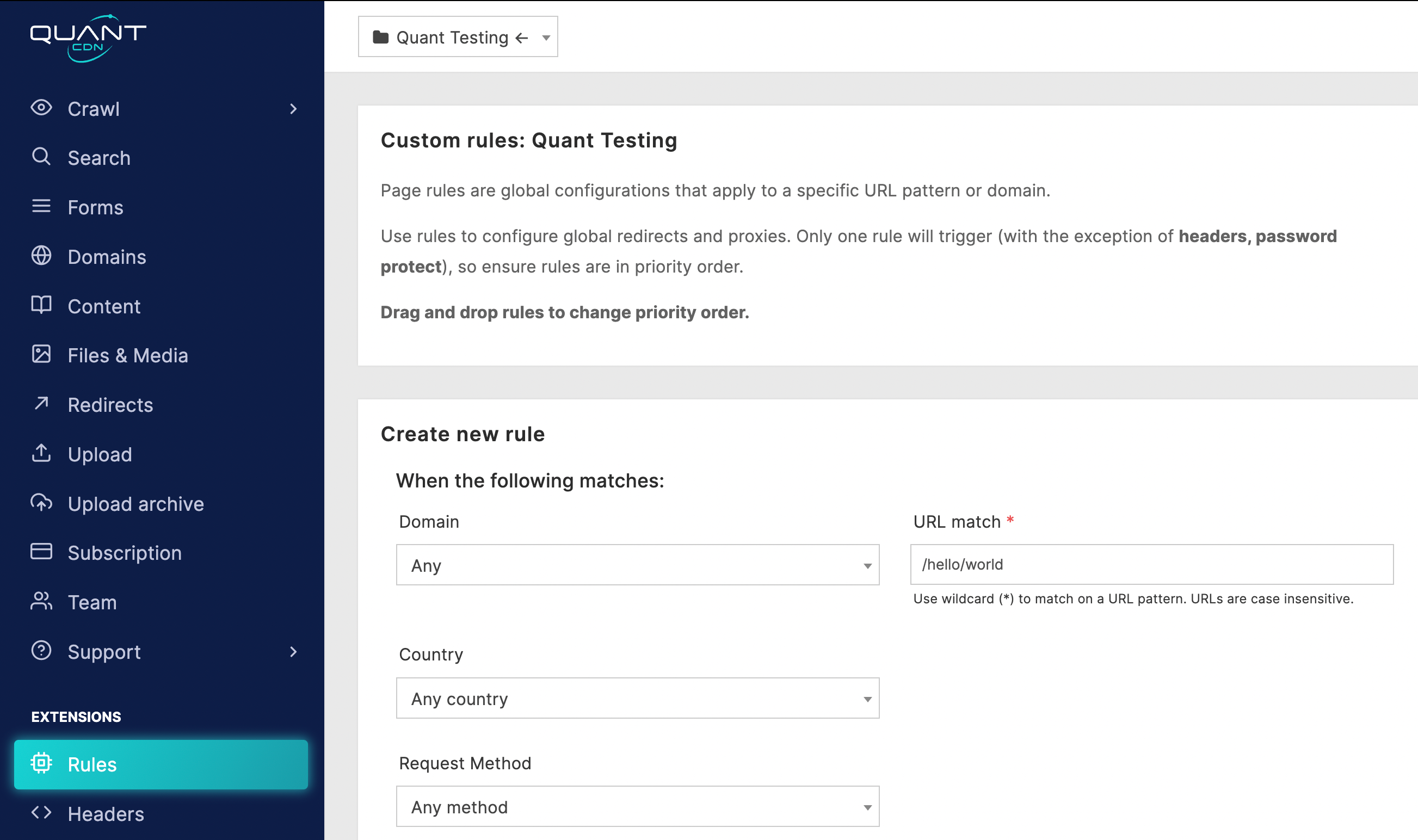
Steps 1 & 2: Page Rules form with URL match field and optional conditions
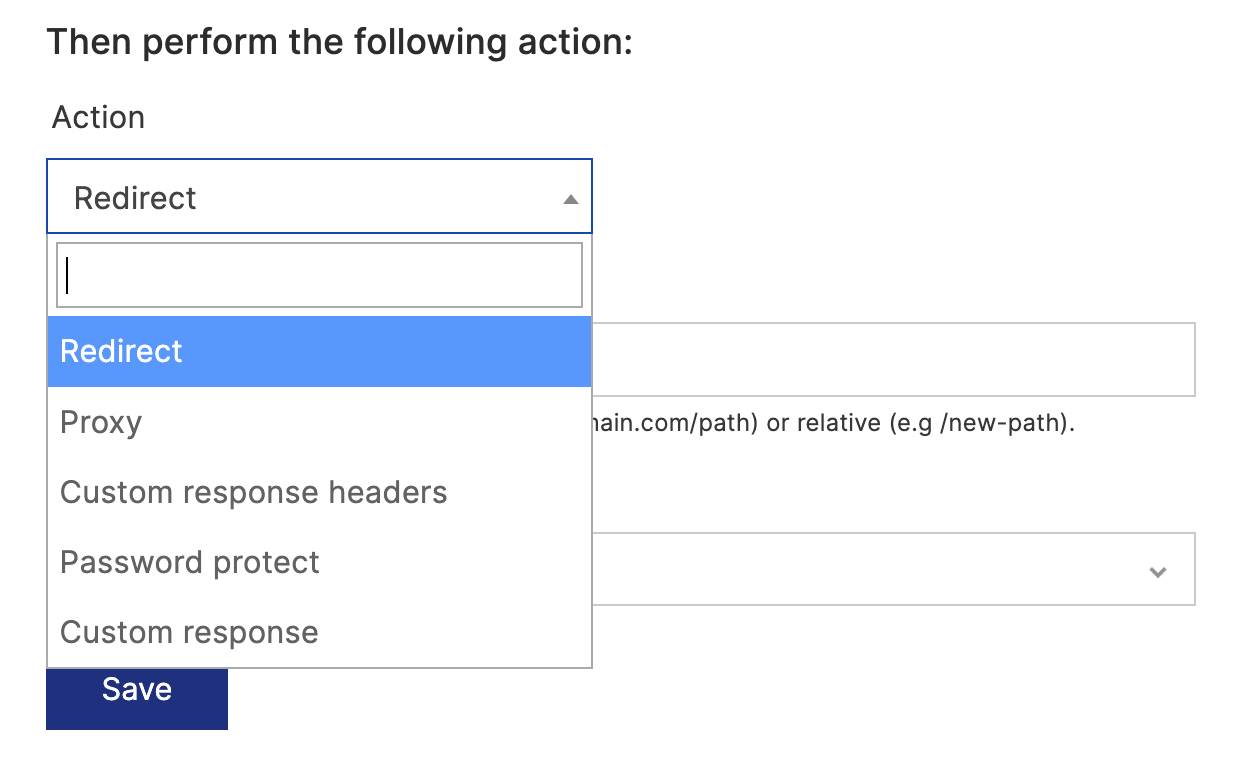
Step 3: Page rules form with Action options
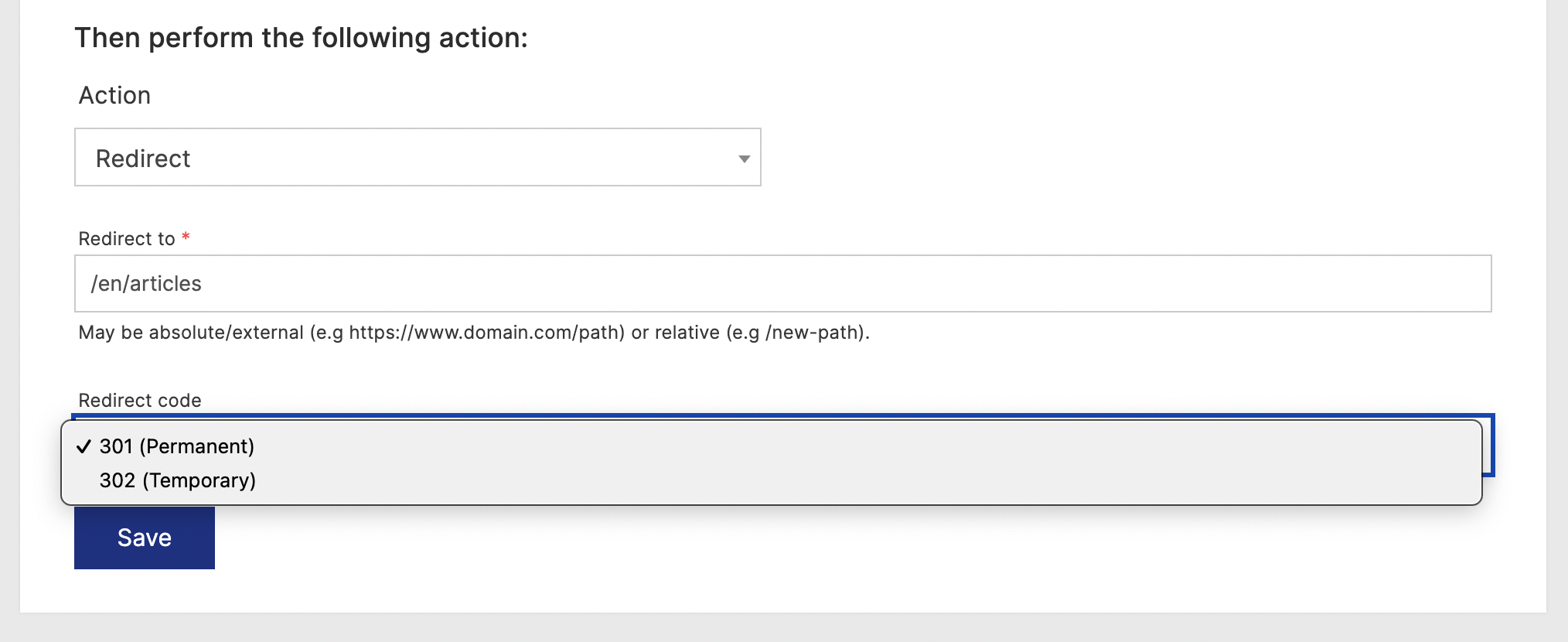
Steps 4 & 5: Page Rules form with Action settings
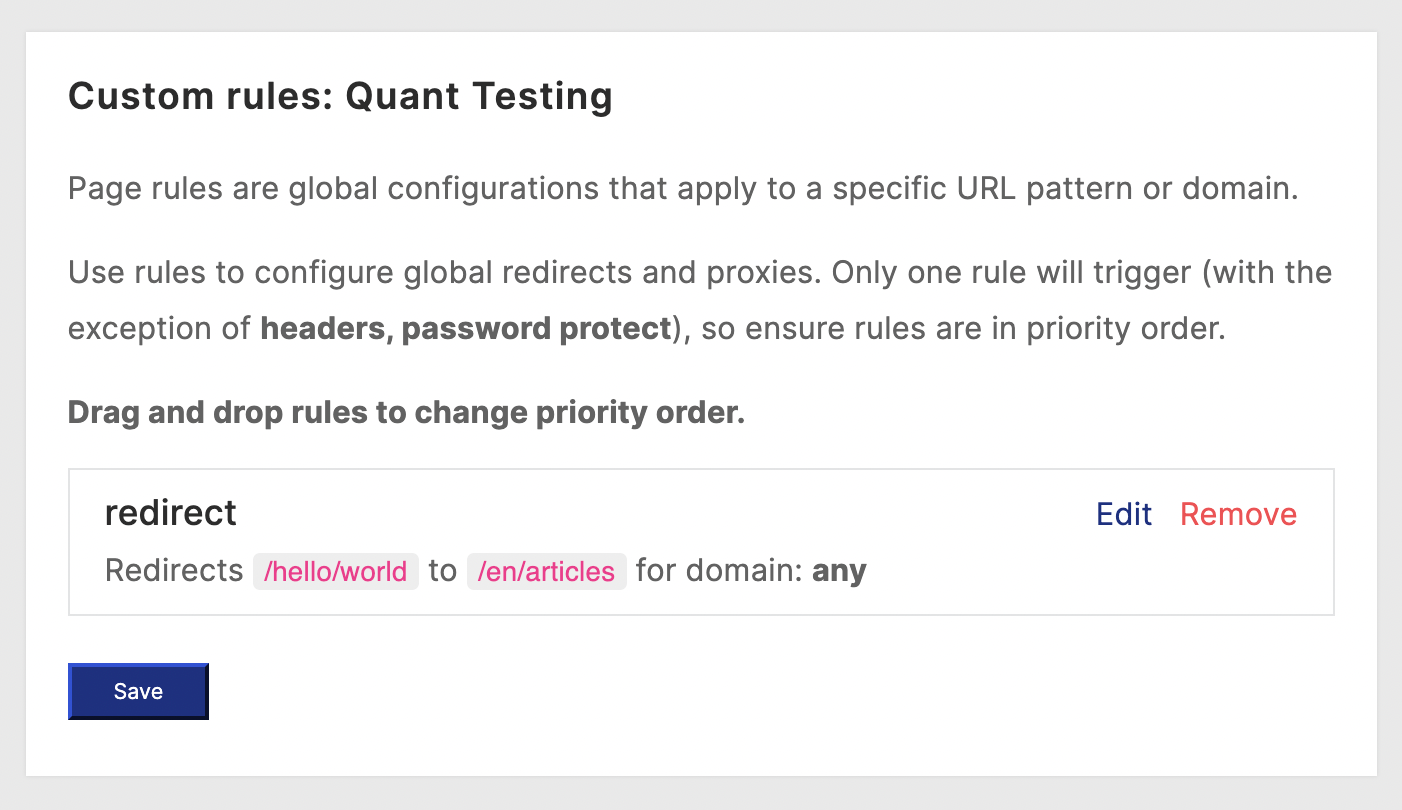
Step 6: Page Rules list after saving
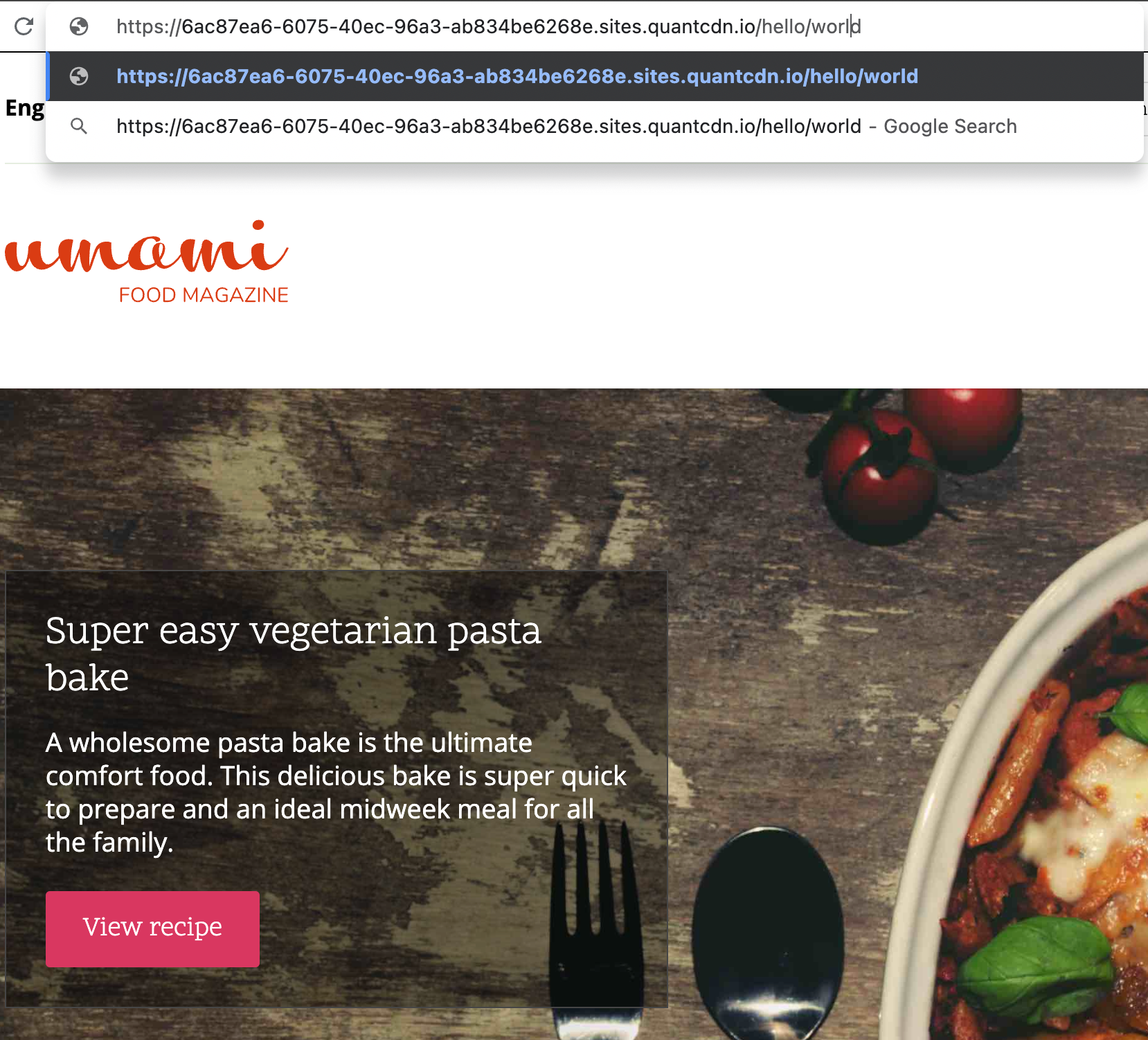
Step 6: Testing /hello/world redirect created with Page Rules

Step 6: Redirect from /hello/world to /en/articles due to Page Rules redirect
If you have any questions or have suggestions for making the Page Rules feature more useful, contact us and let’s talk!
Quant is a global static edge; a CDN combined with static web hosting. We provide solutions to help make WordPress and Drupal sites static, as well as support for all popular static site generators.

Quant Changelog for May 2022: Check out our latest features and updates for the Quant platform, integrations, documentation, and blogs.

We recently added more feature updates to Page Rules. Let’s take a quick look at all the flexible rule options in the dashboard.

The latest release of the Quant Edge includes support for advanced traffic routing based on a user's location. This allows great flexibility; for example, serve static to certain countries while serving as a traditional CDN to others, block access to Drupal and WordPress logins, and much more.
Complete trial with CDN, WAF, Crawler, static integration and support.
Cancel anytime.